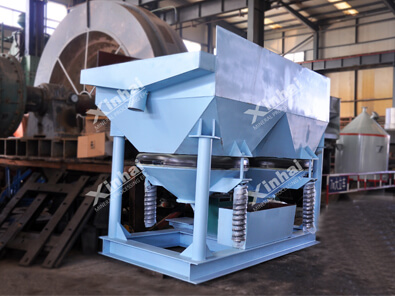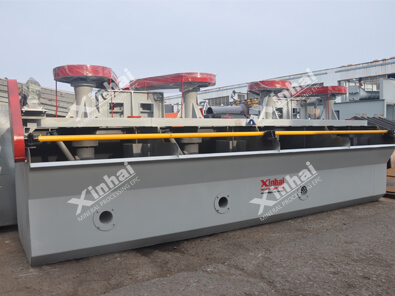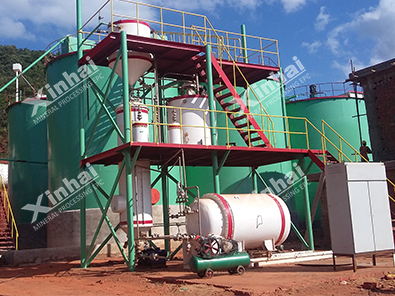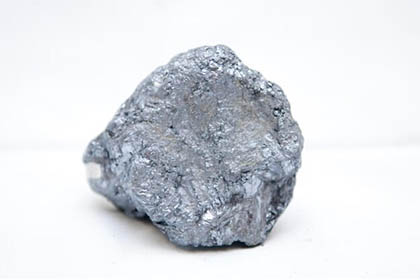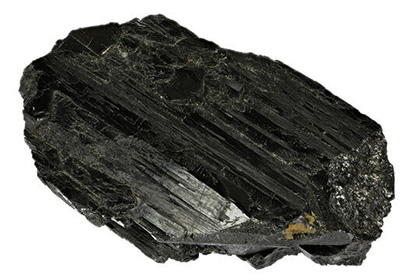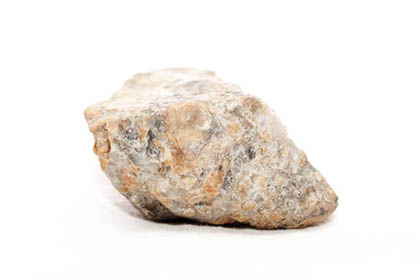9 Ways You Need to Know about Extracting Alluvial Gold
 Sheena
Sheena
 Jan 11, 2025
Jan 11, 2025
 384
384
If you want to know more details about equipment, solutions, etc, please click the button below for free consultation, or leave your requirements!
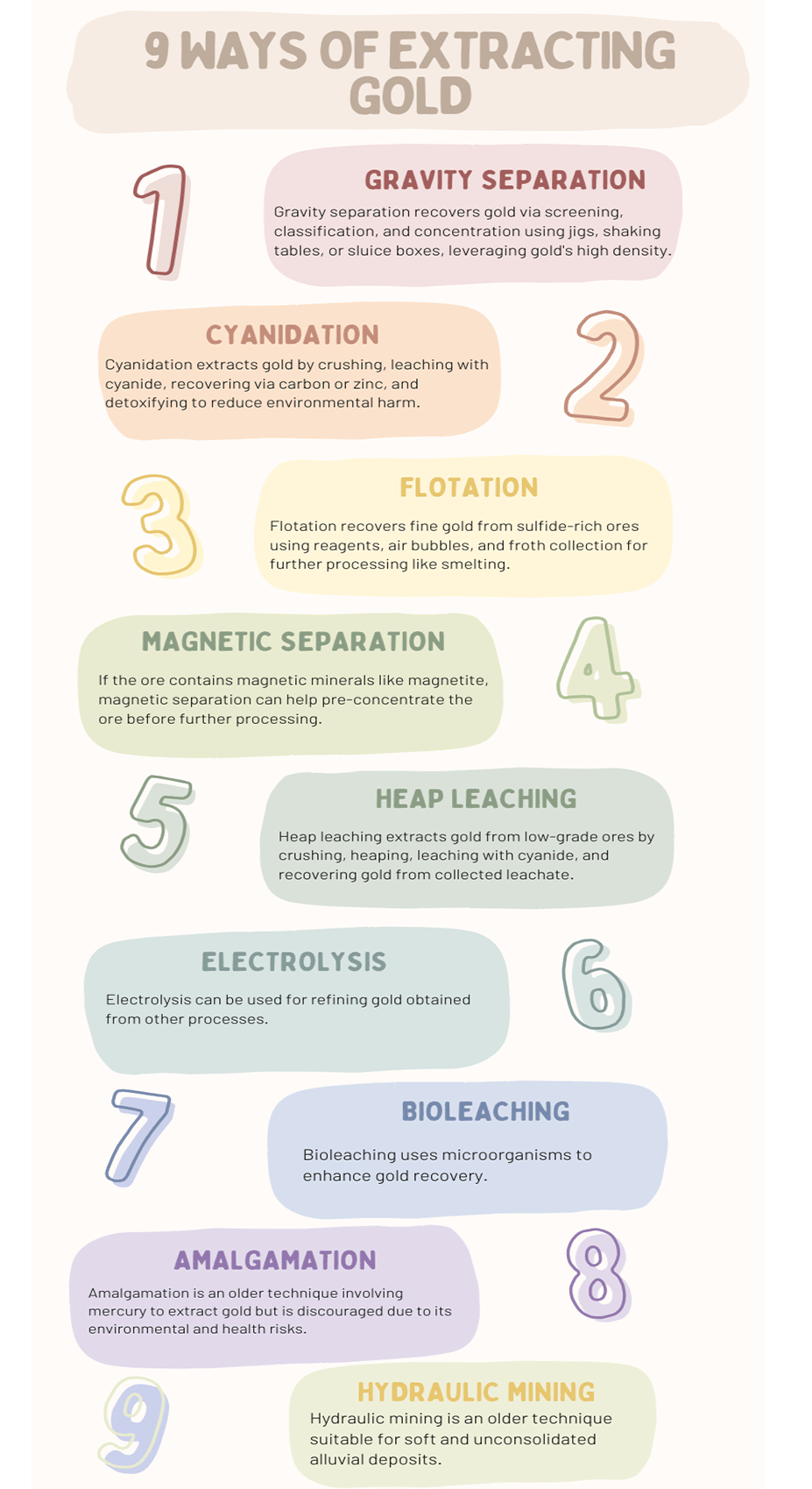
Extracting gold from alluvial gold ores involves several mineral processing methods, which are typically chosen based on the characteristics of the ore. Below is a detailed overview of the common methods:
01Gravity Separation
BackGravity separation is the most widely used method for alluvial gold ores due to its cost-effectiveness and efficiency.
Process Steps:
Screening and Classification:
Use screens or trommels to separate larger rocks and debris from finer materials.
Classify the material into different size ranges for better separation.
Concentration:
Employ devices like jigs, shaking tables, or sluice boxes to concentrate gold based on its high density.
Sluice boxes are commonly lined with riffles or mats to trap fine gold.
Panning:
A manual method used for small-scale operations or as a final refining step.
02Cyanidation
BackCyanidation is a chemical method to extract fine gold particles.
Process Steps:
Crushing and Grinding:
Mill the ore to increase surface area for chemical reactions.
Leaching:
Mix the ore with a cyanide solution to dissolve the gold.
Oxygen may be introduced to enhance the reaction.
Gold Recovery:
Recover gold from the solution using activated carbon (CIL/CIP process) or zinc precipitation (Merrill-Crowe process).
Detoxification:
Treat the residual cyanide to minimize environmental impact.
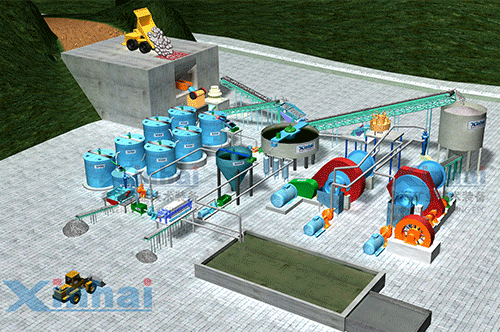
03Flotation
BackFlotation is effective for recovering fine gold particles in ores that are rich in sulfides.
Process Steps:
Conditioning:
Add collectors, frothers, and other reagents to a slurry of crushed ore.
Froth Flotation:
Air bubbles are introduced, attaching to gold and sulfide particles, which rise to the surface.
Concentrate Processing:
Collect the froth concentrate for further gold recovery, such as by smelting.
04Magnetic Separation
BackIf the ore contains magnetic minerals like magnetite, magnetic separation can help pre-concentrate the ore before further processing.
Process Steps:
Pass the ore through magnetic separators to remove magnetic impurities.
Process the non-magnetic fraction for gold extraction.
05Heap Leaching
BackHeap leaching is suitable for low-grade ores and large-scale operations.
Process Steps:
Preparation:
Crush the ore to a uniform size.
Heap Formation:
Lay the ore in heaps on impermeable pads.
Leaching:
Drip a cyanide solution over the heaps, allowing it to percolate and dissolve the gold.
Recovery:
Collect the leachate and recover gold via adsorption or precipitation.
06Electrolysis
BackElectrolysis can be used for refining gold obtained from other processes.
Process Steps:
Dissolve impure gold in a chemical bath.
Use electrical current to deposit pure gold onto electrodes.
07Bioleaching
BackBioleaching uses microorganisms to enhance gold recovery.
Process Steps:
Introduce bacteria that can break down sulfide minerals and release gold.
Leach the processed material with cyanide or other reagents.
08Amalgamation
Back
Amalgamation is an older technique involving mercury to extract gold but is discouraged due to its environmental and health risks.
Process Steps:
Mix the gold-bearing material with mercury to form an amalgam.
Separate the amalgam and heat it to vaporize mercury, leaving pure gold.
Note: This method should only be used under strict environmental controls.
09Hydraulic Mining
BackHydraulic mining is an older technique suitable for soft and unconsolidated alluvial deposits.
Process Steps:
Use high-pressure water jets to wash the ore.
Direct the slurry to sluice boxes for gravity separation.
10Selection Criteria
BackOre Characteristics: Gold particle size, mineral associations, and ore composition.
Scale of Operation: Small-scale (gravity, panning) vs. large-scale (cyanidation, flotation).
Environmental Concerns: Avoid or mitigate methods like amalgamation due to mercury use.
Economic Considerations: Evaluate cost-effectiveness based on gold grade and processing costs.
Let me know if you need more details on any specific method or step!
 +86 18716000713
+86 18716000713 xlyin@xinhaimining.net
xlyin@xinhaimining.net




 Message
Message Chat Now
Chat Now


